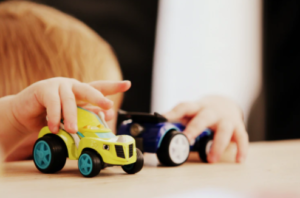Autism can manifest both typical and unusual characteristics. This is due to differences in the brain. People on the autism spectrum don’t have any physical traits that indicate they have autism-like those with Down Syndrome and Muscular Dystrophy. However, they tend to display stimming behaviors, social/emotional, and communicative characteristics that are different from the average person. A child with autism may be stimming for several reasons. These individuals may find repetitive behaviors helpful in managing their anxiety, generating or maintaining awareness of their bodies, focusing their concentration, or dealing with overwhelming feelings or emotions.
Positive Consequences of Stimming
 Self-stimulating behaviors are common in autism. These behaviors can be a simple habits like rocking back and forth or fidgeting. Other times they serve as coping mechanisms or calming mechanisms for anxiety or sensory overload. Autism sufferers may feel out of control, and stim when they need to perceive/maintain their control. People who have high levels of anxiety might feel relief if they stim. Individuals who use stimming behavior can be punished if they become incontinent.
Self-stimulating behaviors are common in autism. These behaviors can be a simple habits like rocking back and forth or fidgeting. Other times they serve as coping mechanisms or calming mechanisms for anxiety or sensory overload. Autism sufferers may feel out of control, and stim when they need to perceive/maintain their control. People who have high levels of anxiety might feel relief if they stim. Individuals who use stimming behavior can be punished if they become incontinent.
Negative Consequences of Stimming
 Children with autism may stim in ways that are harmful to others or property. This is especially true if they are in mainstream classrooms with other children who have similar behavior. Headbanging, biting, and slapping are all examples of stimming behavior that can lead to negative consequences. A child with autism may be inflicted with injury, infection, or even hospitalization if they engage in aggressive or self-injurious behavior.…
Children with autism may stim in ways that are harmful to others or property. This is especially true if they are in mainstream classrooms with other children who have similar behavior. Headbanging, biting, and slapping are all examples of stimming behavior that can lead to negative consequences. A child with autism may be inflicted with injury, infection, or even hospitalization if they engage in aggressive or self-injurious behavior.…

